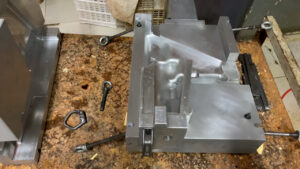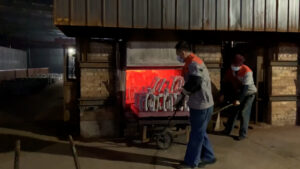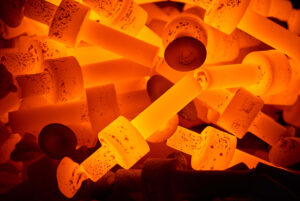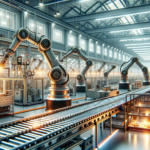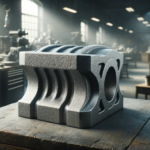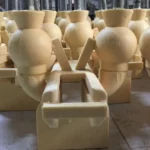Language:

The Advantages of Investment Casting in Modern Manufacturing
Originating from ancient practices, investment casting, also known as precision casting or lost-wax casting, has undergone significant advancements to become a cornerstone in today’s manufacturing landscape. Esteemed for its ability to mould metals into intricate shapes with exceptional accuracy, investment casting is a preferred choice for engineers and designers seeking to push the boundaries of precision and design.
The aim of this discourse is to explore the key benefits of investment casting. From its unparalleled precision and complex design capabilities to its adaptability with a wide range of materials, investment casting offers a plethora of advantages. We will delve into its cost-effectiveness and efficiency in small batch production, as well as the design flexibility it affords, shedding light on why it is considered a superior casting method across various sectors. These include aerospace, automotive, engineering machinery, agriculture, locomotive, medical industries, and many more.

What is Investment Casting?
Investment casting, a process steeped in history yet pivotal in modern manufacturing, stands as a testament to the ingenuity and precision of contemporary engineering. This section seeks to demystify what investment casting is and to trace its evolution from ancient times to its current prominence in the industrial world.
Basic Definition: Investment casting, commonly known as precision casting or lost-wax casting, is a manufacturing process used to create metal parts with intricate shapes and fine details. The process begins with the creation of a wax model, which is an exact replica of the desired part. This model is then encased in a refractory ceramic material to form a mould. Once the mould is hardened, the wax is melted and drained away, leaving a hollow cavity. Molten metal is then poured into this cavity. Once the metal solidifies, the ceramic mould is broken away, revealing the final metal part.
Historical Context: The roots of investment casting trace back thousands of years, with its earliest known applications in the crafting of jewellery and idols in ancient civilisations. Over the centuries, the process has evolved, with significant advancements during the 20th century that propelled it to the forefront of precision metal manufacturing. Today, investment casting is highly valued for its ability to produce components with exceptional accuracy and detail, making it indispensable in industries where precision is paramount.
Evolution of Techniques and Materials: The evolution of investment casting has been marked by improvements in both the materials used and the techniques employed. Modern investment casting utilises advanced refractory materials and specialised alloys, allowing for the production of parts with improved mechanical properties and dimensional accuracy. Additionally, the introduction of automated processes and precision equipment has greatly enhanced the efficiency and scalability of this method.
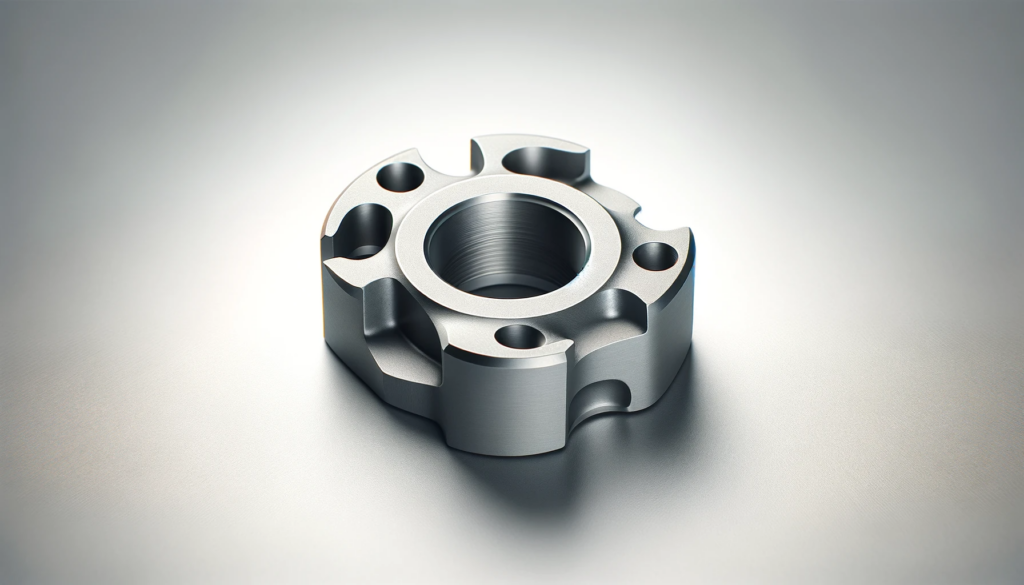
Precision and Complexity
In the arena of metalworking, investment casting is revered for its unparalleled precision and ability to handle complex designs. This section delves into how investment casting achieves such high levels of detail and complexity, setting it apart from other manufacturing processes.
Detail and Accuracy: The cornerstone of investment casting is its extraordinary ability to produce components with intricate details and exacting accuracy. The process starts with a detailed wax model, often created using state-of-the-art techniques like 3D printing, which allows for the replication of complex geometries with remarkable precision. This fidelity is maintained throughout the casting process, as the molten metal fills the minutest cavities of the mould, capturing every detail of the original design.
Complex Geometries and Intricate Designs: Investment casting excels in producing parts with complex internal geometries and intricate external designs that would be challenging or impossible to achieve with other casting methods. This capability is particularly beneficial for components that require undercuts, hollow sections, or elaborate patterns. The versatility of investment casting in handling complexity not only provides design freedom but also enables the integration of multiple parts into a single, cohesive component, thereby reducing assembly requirements and enhancing structural integrity.
Superior Surface Finish: Alongside its precision, investment casting is renowned for its superior surface finish. The smooth surfaces achieved are a direct result of the fine-grained ceramic moulds used in the process. This high-quality finish minimises the need for additional surface treatment, saving time and reducing costs in post-processing.
Advantages in Aerospace and Medical Industries: The precision and complexity attainable with investment casting have made it a preferred method in industries where these attributes are crucial. In aerospace, for instance, investment casting is used to produce lightweight, high-strength components that can withstand extreme conditions. Similarly, in the medical industry, the need for precise and reliable parts, especially for implants and surgical instruments, makes investment casting an ideal choice.

Material Versatility
At the heart of investment casting’s broad appeal across various industries lies its remarkable versatility in handling different metals and alloys. This section explores the extensive range of materials compatible with investment casting and how this versatility benefits the manufacturing process.
Range of Materials: Investment casting is distinguished by its ability to work with a wide spectrum of metals, ranging from common alloys like steel and aluminium to more exotic materials such as titanium and precious metals. This adaptability makes it an ideal process for diverse industrial applications, each with its unique material requirements. For instance, the aerospace industry often employs titanium for its strength-to-weight ratio, while the medical sector might use stainless steel for its corrosion resistance and biocompatibility.
Material Efficiency: One of the notable strengths of investment casting is its efficiency in material usage. The process allows for near-net-shape production, meaning the final casted part requires minimal machining and finishing. This efficiency not only reduces material wastage but also minimises the overall cost and time involved in producing the component.
Handling of High-Performance Alloys: Investment casting is particularly adept at handling high-performance alloys that are difficult to machine or fabricate using other methods. The process’s capability to cast these challenging materials into intricate shapes without compromising their inherent properties is a significant advantage. It allows industries to utilise the full potential of advanced alloys for innovative applications.
Customisation and Alloy Blending: Furthermore, investment casting provides the flexibility to customise alloys to meet specific performance criteria. The ability to blend different metals to create bespoke alloys means that manufacturers can tailor the material properties – such as strength, hardness, or heat resistance – to suit the specific requirements of the application.
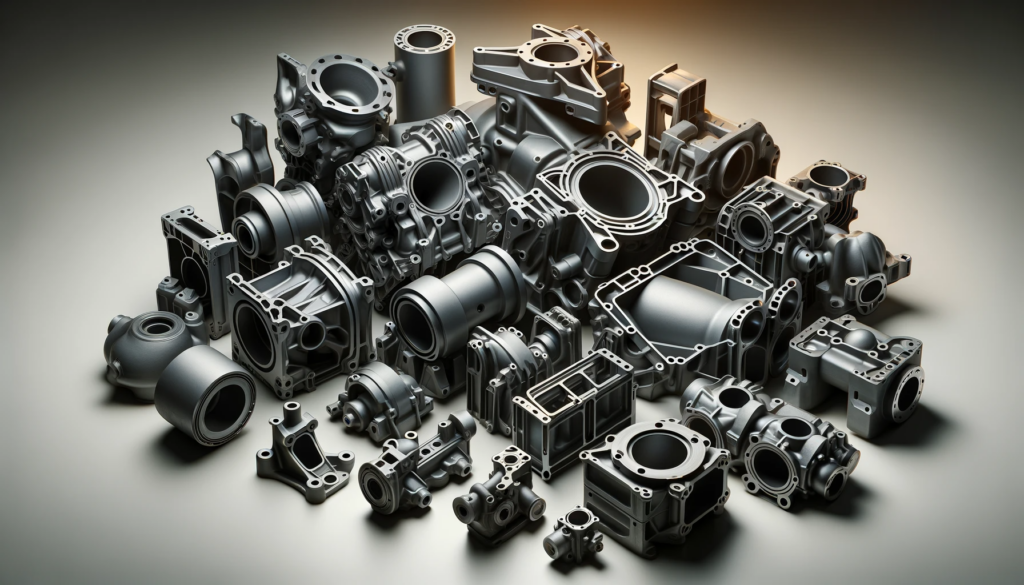
Cost-Effectiveness and Efficiency
In an era where economic efficiency is paramount in manufacturing, investment casting stands out for its cost-effectiveness and efficiency, particularly for specific production scenarios. This section examines how investment casting offers financial and operational advantages, especially for small to medium production runs.
Reduced Machining and Secondary Processing: One of the primary cost benefits of investment casting is its ability to produce parts that are near-net shape. This capability significantly reduces the need for extensive machining and secondary processing, which can be both time-consuming and costly. By achieving closer tolerances and better surface finishes directly from the mould, investment casting minimises the labour and equipment use typically associated with additional machining processes.
Economical for Small Batches: While some manufacturing methods necessitate large production runs to be cost-effective, investment casting maintains its cost efficiency even for smaller batches. This advantage is particularly important for custom components or specialised industries where large-scale production is not viable or necessary. The flexibility to economically produce small quantities allows manufacturers to respond swiftly to market demands or to develop prototypes without incurring prohibitive costs.
Tooling Longevity: The durability of investment casting moulds contributes to its cost-effectiveness. Made from high-grade materials, these moulds can withstand repeated use, ensuring a longer lifespan and amortising the initial tooling cost over a larger number of parts. This longevity is especially advantageous for ongoing or recurring production runs.
Waste Reduction and Material Savings: Investment casting’s material efficiency not only aligns with economic considerations but also with environmental sustainability. The process’s ability to minimise waste through precise casting and reduced need for excess material trimming contributes to overall material savings. This efficiency not only reduces costs but also aligns with the growing emphasis on sustainable manufacturing practices.
Design Flexibility and Innovation
Investment casting is not merely a manufacturing process; it is a facilitator of design flexibility and innovation. This section explores how this versatile technique empowers designers and engineers, enabling the creation of components that are both technically complex and aesthetically sophisticated.
Design Freedom: A key attribute of investment casting is the unparalleled design freedom it offers. Unlike other manufacturing processes that may impose constraints due to their technical limitations, investment casting can accommodate a wide range of complex shapes and sizes. Designers can integrate intricate details, undercuts, and hollow sections without the need for assembling multiple parts. This liberty in design opens up new horizons for innovation in product development, allowing for the exploration of forms that were previously deemed unfeasible.
Potential for Innovation: Investment casting is a driving force behind innovation in various sectors. The process’s ability to handle complex geometries and fine details encourages designers to push the boundaries of what is possible. It is particularly conducive to the prototyping phase, where rapid iteration and testing of designs are crucial. By facilitating the quick transition from concept to physical part, investment casting accelerates the innovation cycle, allowing for the rapid advancement of new ideas and solutions.
Customisation and Tailored Solutions: Investment casting’s flexibility is also evident in its ability to produce customised parts tailored to specific requirements. This aspect is invaluable in industries such as medical, where bespoke implants or surgical tools can be manufactured to suit individual patient needs. Similarly, in the aerospace and automotive sectors, the ability to produce lightweight, high-strength components tailored to specific applications is crucial for performance optimisation.
Impact on Material Utilisation and Performance: Furthermore, the versatility of investment casting extends to its use of various alloys, enabling the selection of materials based on the desired properties of the final component. Engineers can optimise parts for strength, weight, corrosion resistance, or thermal properties, ensuring that each component not only fits its intended purpose but also enhances overall product performance.
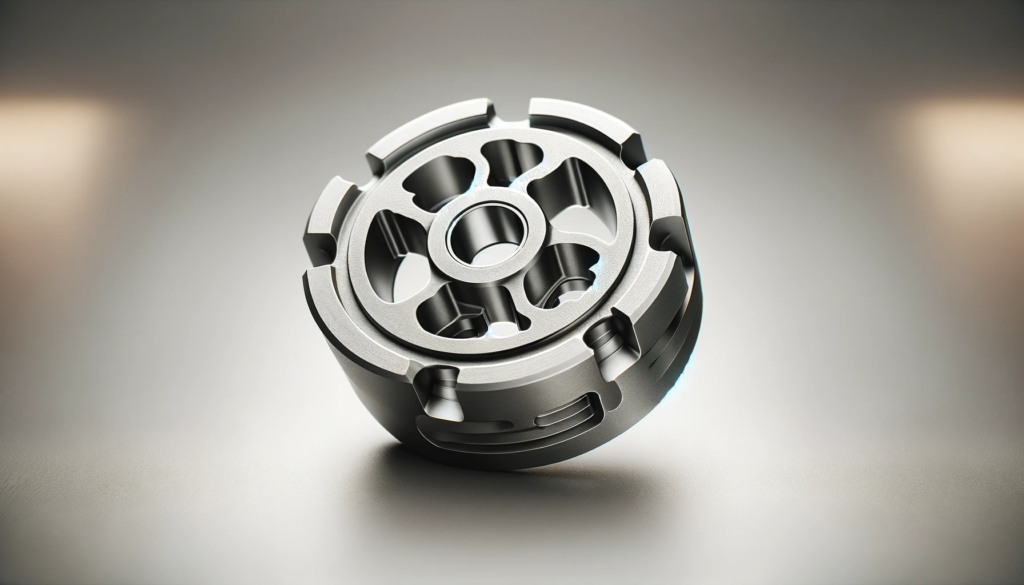
6: Industry Applications
Investment casting has cemented its role as a versatile and reliable manufacturing process, with applications extending across a myriad of industries. This section provides an overview of how investment casting is utilised in various sectors, from aerospace to medical, showcasing its broad industrial applicability.
Aerospace Industry: In the realm of aerospace, the precision and strength-to-weight ratio offered by investment casting are invaluable. Components such as turbine blades, engine components, and structural parts for aircraft are often produced using this method. The ability to cast complex shapes in high-performance alloys like titanium and Inconel is crucial for meeting the stringent requirements of the aerospace industry.
Automotive Industry: The automotive sector relies on investment casting for producing various components, including engine parts, transmission components, and structural elements. The process’s ability to produce durable and lightweight parts contributes significantly to vehicle efficiency and performance. Investment casting also allows for the rapid prototyping of new designs, essential in the fast-paced automotive industry.
Locomotive and Railway: Investment casting finds its use in the locomotive industry, particularly in manufacturing complex parts such as valve components, brake systems, and coupling mechanisms. The durability and precision of investment-cast parts are critical for ensuring the safety and reliability of railway systems.
Engineering Machinery: In the field of engineering machinery, investment casting is employed to create robust and intricate components such as hydraulic systems, pumps, and machinery parts. The process’s versatility in handling different materials allows for the production of parts that can withstand extreme operational conditions.
Agricultural Sector: The agricultural industry benefits from investment casting in the production of machinery parts, tools, and equipment components. The process’s ability to produce parts that are both strong and resistant to wear and corrosion is particularly beneficial in the demanding agricultural environment.
Medical Industry: Investment casting plays a pivotal role in the medical field, particularly in the manufacture of surgical instruments, implants, and orthopaedic devices. The process’s capability for high precision and use of biocompatible materials is essential for medical applications, where accuracy and reliability are paramount.
Other Applications: Beyond these industries, investment casting is also utilised in sectors such as energy, where it is used to produce parts for the oil and gas industry, as well as in renewable energy applications. It is also prevalent in the manufacturing of consumer goods, sporting goods, and in the defence sector for producing specialised military components.
Conclusion
As we conclude our exploration of investment casting and its myriad advantages, it is evident that this process is not just a manufacturing technique but an essential pillar in modern industrial operations. The precision, versatility, and efficiency of investment casting make it indispensable across a wide range of sectors, from aerospace to the medical field.
In the landscape of investment casting, companies like Taiyuan Simis Investment Casting Co., Ltd stand as exemplars of excellence. With their commitment to quality and innovation, Simis has harnessed the full potential of investment casting, delivering components that meet the highest standards of precision and performance. Their expertise in navigating the complexities of various materials and designs exemplifies the adaptability and technical proficiency that investment casting offers.
The diverse applications of investment casting, as seen in industries such as aerospace, automotive, medical, and agriculture, underline its role as a versatile and reliable manufacturing solution. The ability to produce intricate and durable components efficiently positions investment casting as a key contributor to technological advancements and industrial growth.
Looking ahead, the future of investment casting, championed by forward-thinking companies like Simis, is poised for further innovation and expansion. As new materials and technologies emerge, the boundaries of what can be achieved through investment casting will continue to expand, offering even greater possibilities in manufacturing excellence.
In conclusion, investment casting remains a cornerstone of precision manufacturing, vital for its technical merits and the vast array of industries it serves. Companies like Taiyuan Simis Investment Casting Co., Ltd, at the forefront of this field, not only exemplify the best of this process but also drive its evolution, ensuring that investment casting continues to be a key enabler of industrial innovation and efficiency.
